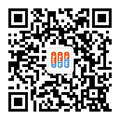Introduction to the basics of Bluetooth BQB certification
Bluetooth is now appearing more and more in: computers, tablets, cars, mobile phones, smart homes, sports and fitness equipment, audio and video equipment. It is ubiquitous, pairing is becoming easier and safer, and it has become a communication technology often used in life and work.
How to ensure that Bluetooth products meet the technical specifications and obtain authorization to use the Bluetooth logo? To put it simply, it needs to pass the Bluetooth BQB certification, and the Bluetooth BQB certification is the responsibility of the Bluetooth SIG.
1. Bluetooth BQB certification process:


2. Bluetooth BQB certification mandatory process QEP (Qualification Enforcement Program):
Bluetooth products will encounter customs inspections and Bluetooth SIG audits during the sales process. The Bluetooth SIG does not allow any non-compliance, so compliance to the specification is handled through this QEP process. Members are always responsible for ensuring that products comply with Bluetooth technical specifications and meet qualification certification requirements, and submit designated company employees, addresses, and contact information to be responsible for this during the qualification certification process. The mandatory process steps for certification are as follows:


It is worth mentioning that products also need to meet the marking requirements, and corrective measures should be taken for those that do not meet the marking requirements. Often such deficiencies manifest as incorrect or inappropriate references to certified designs, ambiguous or immutable markings.
3. Bluetooth BQB certification test content:
1. Radio frequency RF test, whether it is a complete Bluetooth product or a module in qualification certification, RF test or evaluation is generally carried out according to the product situation. According to the level of TCRL (Test Case Reference List), all of them must be tested. The test structure and required test content are as follows:


The RF radio frequency test setup is as follows:


2. Profile Bluetooth configuration test, use Sniffer-style Bluetooth test suite, test the complete prototype with button operation, and test the top-level application according to different Bluetooth product functions. This website has a dedicated chapter introduction.
4. Bluetooth BQB-certified Bluetooth version and core optional standard configuration.
1. Bluetooth BQB certification Currently, the Bluetooth versions that can be selected for certification are as follows:


(1) The version marked as "obsolete" is no longer accepted for certification. If you insist on qualification certification, you will need to purchase a high numbering fee.
(2) Bluetooth version 3.1 is an embarrassing existence. In the past, if host 4.0+controller 3.0 or host 3.0+controller 4.0 was 3.1, now it has all been defined as 3.0.
(3) On June 17, 2016, the Bluetooth 5 (Bluetooth 5.0) standard came out, which is currently the highest Bluetooth version.
2. Bluetooth version +EDR, or +HS (High Speed up to 24Mbps)? Single-mode or dual-mode products? A brief and less rigorous assessment is as follows:
(1) If the Bluetooth protocol contains π/4-DQPSK (2Mbps) and 8DPSK (3Mbps) modulation methods, Bluetooth version 2.0-2.1 can +EDR.
(2) If the Bluetooth protocol includes 802.11 MACPHY, 802.11PAL, A2MP and other protocols, the Bluetooth version of the product can be +HS.
(3) If there are only RF-PHY, LL, GATT, ATT and other protocols in the Bluetooth protocol, they are generally called Bluetooth low-power products (Bluetooth single-mode, BLE, Bluetooth Smart), and Bluetooth version 4.0 and above only carry these protocols. If it also has BB, LMP, L2CAP, GAP, etc. in addition to these protocols, it is generally called a Bluetooth dual-mode product (Bluetooth Smart Ready).


Recommended items
-

How to finish BQB Certifications
Now more and more computers, tablets, cars, mobile phones, smart home, sports equipment, audio and video equipment have Bluetooth function. Everywhere, pairing is more and more simple, security is also constantly improving,it become a communication technology that often used in life and work....View more -

What are the BQB certification requirements for the Bluetooth Core Layer
There are two most common application modes of the Bluetooth specification. Each application mode will have the minimum core configuration requirements for the software (Host) part and the hardware (Controller) part to combine to realize a complete Bluetooth wireless transmission solution....View more -

The certification difference between End Product/Subsystem and Component in Bluetooth BQB certification
The selection of Bluetooth BQB certification type is something that must be done in the certification processView more -

Bluetooth headset SRRC certification, what test materials need to be prepared, and the approval of wireless models
First of all, here is a brief introduction to SRRC. SRRC is a mandatory certification requirement of the State Radio Regulatory Commission. Since 1999, the Ministry of Information Industry of China has mandated that any sales with radio products with communication functions must be approved and certified by the radio type. At present, SRRC certification is the same as the we...View more




